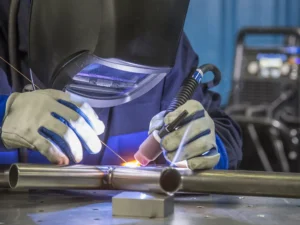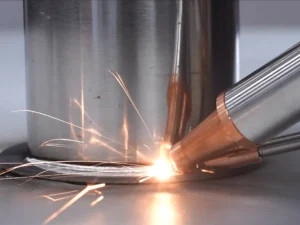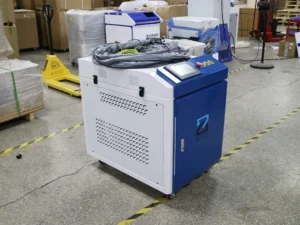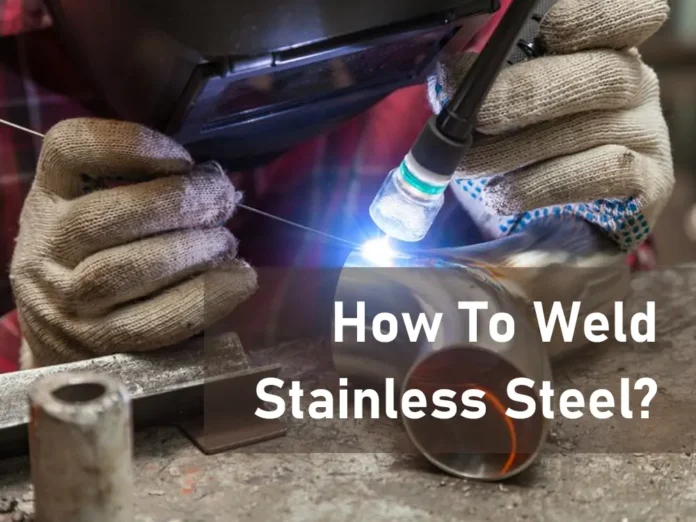Introduction:
Stainless steel welding offers many advantages, making it ideal for many applications. One of the most significant advantages is its durability and corrosion resistance. Welding stainless steel can be accomplished using various methods. Each has its own advantages and considerations. In stainless steel manufacturing and processing, laser welding has become vital. How to weld stainless steel? This article will deeply explore stainless steel welding.
How To Weld Stainless Steel?

1. Argon Arc Welding
When an argon arc welds stainless steel, good protection is achieved. The alloy elements are not easy to burn, and the transition coefficient is high. The weld is well-formed, has no slag shell, and has a smooth surface. The welded joint has high heat resistance and good mechanical properties. Manual tungsten arc welding is widely used in argon arc welding. It is used to weld 0.5~3mm stainless steel sheets. The composition of the welding wire is generally the same as that of the weldment. The protective gas is generally industrial pure argon.
The speed during welding should be as fast as possible, and try to avoid sideways swings. Fusion arc welding can be used for stainless steel with a thickness greater than 3mm. Argon arc welding has high productivity, a small heat-affected zone of the weld, and small deformation of the weldment. It has good corrosion resistance and has easy automated operation.
2. Gas Welding
The gas welding is convenient and flexible. It can weld seams in various spatial locations. Gas welding can sometimes be used for stainless steel parts, such as thin plate structures and thin-walled pipes. This is without corrosion resistance requirements. The welding tip is generally smaller than when welding low-carbon steel of the same thickness to prevent overheating. The gas welding flame should use a neutral flame. The welding wire should be selected according to the composition and performance of the weldment.
The angle between the torch tip and the weldment is 40 to 50 degrees when welding. The distance between the flame core and the molten pool should be no less than 2mm. The end of the welding wire is in contact with the molten pool and moves along the weld with the flame. The welding torch does not swing laterally. It should be fast, and try to avoid interruptions.
3. Manual Welding
Manual welding is a prevalent and easy-to-use welding method. Humans adjust the length of the arc. The size of the gap between the welding rod and the workpiece determines it. This straightforward welding method can be used to weld almost all materials. It is easily adaptable for outdoor use and is no problem even when used underwater.
4. MIG/MAG Welding
This is an automatic gas-shielded arc welding method. The arc is burned between the current carrier wire and the workpiece under a shielding gas shield. The wire fed by the machine acts as a welding rod and melts under its arc. Due to its versatility and specificity, it is still the world’s most widely used welding method. It is used for steel, non-alloy, low alloy, and high alloy-based materials. MAG can meet the requirements of thin gauge steel plates with 0.6mm thickness when welding steel. The shielding gas used here is a reactive gas such as carbon dioxide or a mixed gas. MIG/MAG welding has the only limitation. The workpiece must be protected from moisture to maintain the gas effect when welding outdoors.
5. TIG Welding
The arc is generated between the refractory tungsten welding wire and the workpiece. The protective gas used here is pure argon. The wire fed in is not electrified. The welding wire can be fed by hand or mechanically. Some specific uses do not require feeding the wire. The material to be welded determines whether to use direct or alternating current. The tungsten welding wire is set to the negative electrode when using direct current.
6. Laser Welding

This welding has high efficiency, low heat input, low cost, and environmental protection. Laser welding seams are smooth and beautiful. The weld metal volume is small. It is suitable for parts with high appearance requirements.
The front end of the welding gun is usually designed with an extended guide nozzle. During the welding, the tip of the guide nozzle can stick to the workpiece and move along the shape of the workpiece. The operator does not need to spend effort to overcome the gravity of the welding gun itself, like manual arc welding during use. It can be operated with one hand. Therefore, the skill level required for welders is low. Usually, a welder only takes 5 to 7 days to learn to use it proficiently from the beginning. Under the same circumstances, a skilled manual arc welder needs 30 days or longer.
Its efficiency has been qualitatively improved for more complex workpieces compared to traditional manual arc welding. In terms of flexibility, the welding gun can be customized. It can be adapted to welding in various small spaces. That is the position where manual arc welding can be welded. Handheld laser welding can also be done.
The key role of laser welding stainless steel
One of the characteristics of stainless steel is its high-quality requirements. So, welding stainless steel requires a high-precision method. Laser welding stainless steel uses high-energy laser beams to achieve excellent welding quality. This ensures the strength and sealing of welded joints. This is critical for manufacturing that requires a high degree of corrosion resistance and air tightness. These include food processing equipment, medical devices, and chemical containers.
Stainless steel laser welding is a non-contact welding technology. There is almost no heat transfer to the surrounding materials during welding. This means that the heat-affected zone of stainless steel is tiny. This reduces the risk of thermal deformation and grain coarsening in the welding area. This is important to maintain the material properties and appearance of stainless steel.
-
High-efficiency manufacturing

The stainless steel laser welding machine has a high degree of automation and fast welding speed. It can complete complex welding tasks in a short time. This improves the production efficiency of stainless steel products and reduces production costs.
The future trend of laser welding
-
Intelligent and adaptive welding
Laser welding stainless steel technology may be equipped with more intelligent control systems. It uses sensors and artificial intelligence technology to achieve adaptive welding. This will enable the machine to adjust to different stainless steel product design requirements in real time. This improves welding accuracy and efficiency. Machine learning algorithms will help optimize welding parameters for optimal performance.
Future stainless steel products may use a combination of materials to improve performance and reliability. Stainless steel laser welding machines can handle different kinds of metal alloys. These include aluminum, copper, and nickel alloys.
-
Energy saving and environmental protection
Stainless steel manufacturing is increasingly focusing on sustainability and environmental protection. Future welding technology will pay more attention to energy efficiency. It uses more energy-saving laser sources and reduces waste generation to meet environmental protection requirements.
Conclusion:
Overall, laser welding stainless steel technology plays a crucial role in stainless steel manufacturing and processing. It provides a solid foundation for high-quality stainless steel products. With the advancement of technology, stainless steel laser welding will continue to play an essential role in various fields.
